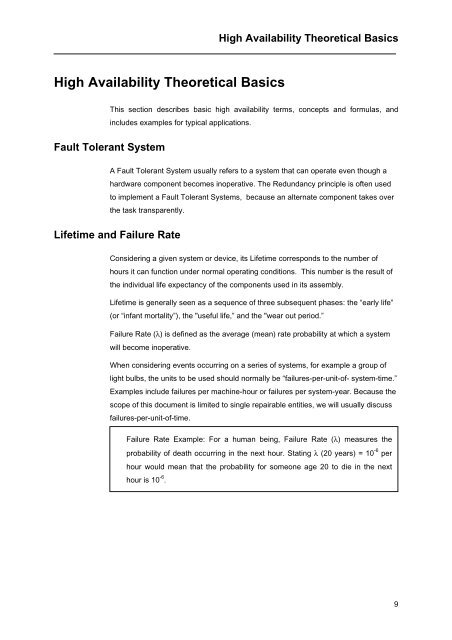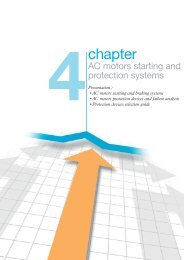High Availability Theoretical Basics - Schneider Electric
High Availability Theoretical Basics - Schneider Electric
High Availability Theoretical Basics - Schneider Electric
You also want an ePaper? Increase the reach of your titles
YUMPU automatically turns print PDFs into web optimized ePapers that Google loves.
<strong>High</strong> <strong>Availability</strong> <strong>Theoretical</strong> <strong>Basics</strong><br />
Fault Tolerant System<br />
<strong>High</strong> <strong>Availability</strong> <strong>Theoretical</strong> <strong>Basics</strong><br />
This section describes basic high availability terms, concepts and formulas, and<br />
includes examples for typical applications.<br />
A Fault Tolerant System usually refers to a system that can operate even though a<br />
hardware component becomes inoperative. The Redundancy principle is often used<br />
to implement a Fault Tolerant Systems, because an alternate component takes over<br />
the task transparently.<br />
Lifetime and Failure Rate<br />
Considering a given system or device, its Lifetime corresponds to the number of<br />
hours it can function under normal operating conditions. This number is the result of<br />
the individual life expectancy of the components used in its assembly.<br />
Lifetime is generally seen as a sequence of three subsequent phases: the “early life”<br />
(or “infant mortality”), the "useful life,” and the "wear out period.”<br />
Failure Rate (λ) is defined as the average (mean) rate probability at which a system<br />
will become inoperative.<br />
When considering events occurring on a series of systems, for example a group of<br />
light bulbs, the units to be used should normally be “failures-per-unit-of- system-time.”<br />
Examples include failures per machine-hour or failures per system-year. Because the<br />
scope of this document is limited to single repairable entities, we will usually discuss<br />
failures-per-unit-of-time.<br />
Failure Rate Example: For a human being, Failure Rate (λ) measures the<br />
probability of death occurring in the next hour. Stating λ (20 years) = 10 -6 per<br />
hour would mean that the probability for someone age 20 to die in the next<br />
hour is 10 -6 .<br />
9

















